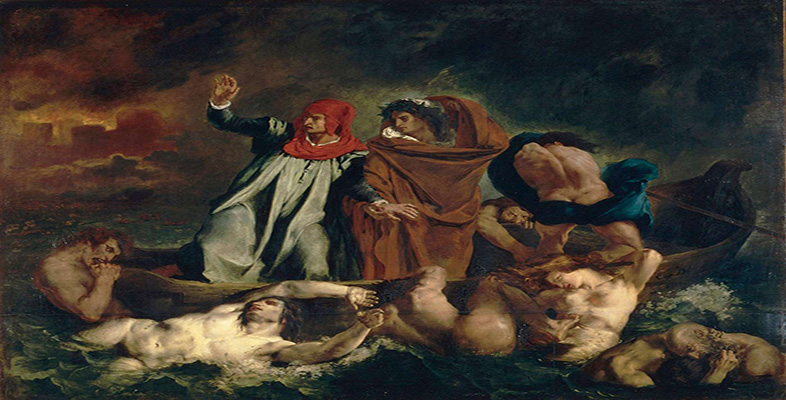3.4 Neoclassical and the Baroque – a delicate balance
As, from the seventeenth century onwards, French aesthetic preferences polarised around Poussin and Rubens (perceived champions, respectively, of line and colour), the argument was largely one of degree: the proportion of swirling movement and colour to balance, order, contour and harmony. The late nineteenth-century philosopher Nietzsche characterised Greek tragedy, and indeed all art, as a tension between the Dionysiac (Bacchanalian forces of whirling revelry, after Dionysus, the Greek god of wine) and the Apolline (the forces of poetic harmony, order and reason, after Apollo, the Greek god of beauty, civilisation and the arts). This tension is evident in Delacroix’s painting, as the Apolline neoclassical comes under attack from the Romantic Dionysiac: the lack of obvious focal point or compositional unity seems to drive his work even beyond the Baroque. For many contemporaries, Sardanapalus had got the balance wrong, and much of the remainder of Delacroix’s career aimed to address this. He did not, however, follow the neoclassicists Gérard, Guérin and Ingres. While aiming for more ordered compositions, he continued to see Michelangelo and Rubens as the sources of a classicism more muscular, dynamic and vital than that championed by the Academy and David’s followers. He sought a more expressive classicism, better adapted to the prevailing culture of the Romantic:
Delacroix’s pictorial practice was shaped by conflict. Aiming at both simplicity of effect and a richness of colour and texture, striving for the calm of Veronese and the turbulence of Rubens, Delacroix was forever torn between his classic sense of order and his innate Romantic impulse. To resolve that conflict was the driving force of his art.
(ten-Doesschate Chu, 2001, p.107)
Click to see Plate 6: Peter Paul Rubens, The Landing of Marie de’ Medici at Marseilles [Tip: hold Ctrl and click a link to open it in a new tab. (Hide tip)] , 3 November 1600
